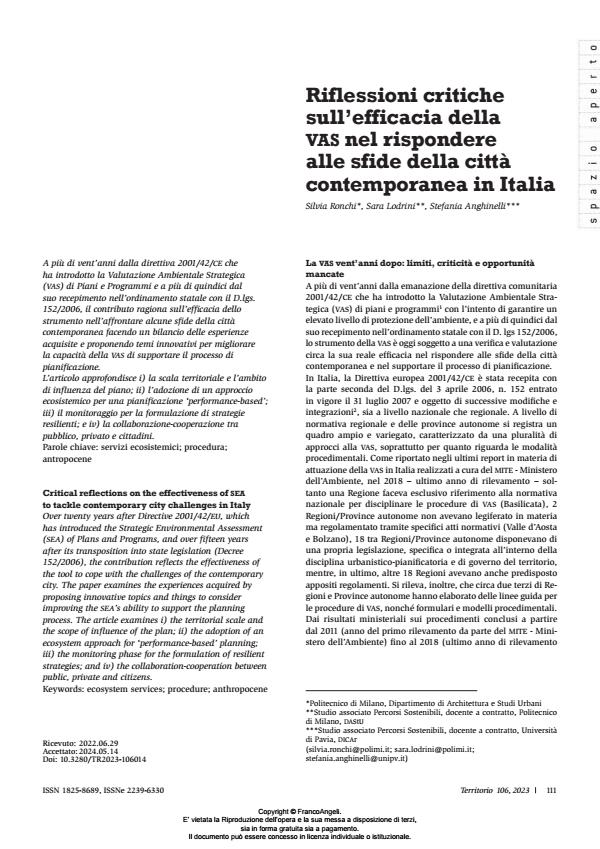Critical reflections on the effectiveness of SEA to tackle contemporary city challenges in Italy
Journal title TERRITORIO
Author/s Silvia Ronchi, Sara Lodrini, Stefania Anghinelli
Publishing Year 2024 Issue 2023/106
Language Italian Pages 10 P. 111-120 File size 290 KB
DOI 10.3280/TR2023-106014
DOI is like a bar code for intellectual property: to have more infomation
click here
Below, you can see the article first page
If you want to buy this article in PDF format, you can do it, following the instructions to buy download credits

FrancoAngeli is member of Publishers International Linking Association, Inc (PILA), a not-for-profit association which run the CrossRef service enabling links to and from online scholarly content.
Over twenty years after Directive 2001/42/EU, which has introduced the Strategic Environmental Assessment (SEA) of Plans and Programs, and over fifteen years after its transposition into state legislation (Decree 152/2006), the contribution reflects the effectiveness of the tool to cope with the challenges of the contemporary city. The paper examines the experiences acquired by proposing innovative topics and things to consider improving the SEA’s ability to support the planning process. The article examines i) the territorial scale and the scope of influence of the plan; ii) the adoption of an ecosystem approach for ‘performance-based’ planning; iii) the monitoring phase for the formulation of resilient strategies; and iv) the collaboration-cooperation between public, private and citizens.
Keywords: ecosystem services; procedure; anthropocene
Silvia Ronchi, Sara Lodrini, Stefania Anghinelli, Riflessioni critiche sull’efficacia della VAS nel rispondere alle sfide della città contemporanea in Italia in "TERRITORIO" 106/2023, pp 111-120, DOI: 10.3280/TR2023-106014